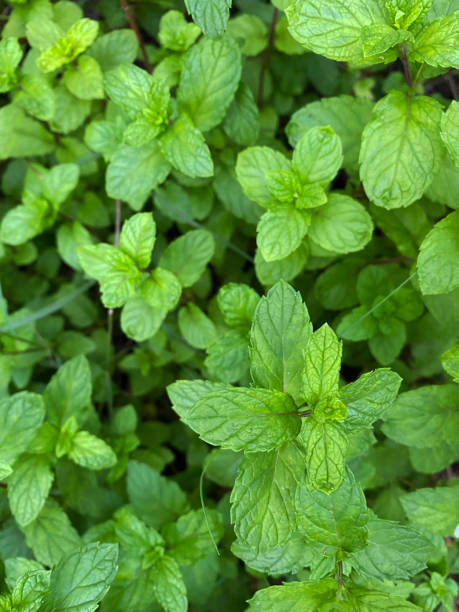Spearmint, known for its refreshing aroma and medicinal properties, is a popular herb that has been cultivated and used for centuries. In Egypt, the herb holds a special place in both agriculture and everyday life due to its favorable growing conditions and diverse uses.
Cultivation of Spearmint in Egypt
Climate and Soil Requirements:
- Spearmint thrives in Egypt’s warm climate, which provides the ideal growing conditions for the herb. It prefers well-drained, loamy soil with plenty of organic matter.
- The Nile Delta region is particularly suitable for spearmint cultivation due to its rich, fertile soil and adequate water supply.
Planting and Growth:
- Spearmint is usually propagated through cuttings or root divisions rather than seeds, as this ensures a more consistent yield.
- Farmers plant spearmint in early spring, and the herb requires frequent watering to maintain healthy growth.
Pest and Disease Management:

- Spearmint is susceptible to certain pests, including aphids and spider mites. Farmers use integrated pest management techniques, such as introducing beneficial insects, to protect their crops.
- Regular monitoring and organic pest control methods are key to ensuring a healthy harvest.
Harvesting:
- Spearmint is typically harvested two to three times per growing season, depending on the region and weather conditions.
- The leaves are cut just before the flowering stage, as this is when the essential oil content is at its peak.
Uses of Spearmint
Culinary Uses:
- Spearmint is a staple in Egyptian cuisine, adding flavor and aroma to various dishes such as salads, teas, and desserts.
- It is a common ingredient in traditional Egyptian drinks, such as “Ayran” and “Sahlab,” where it adds a refreshing taste.
Medicinal Uses:
- Spearmint has been used in traditional medicine for its digestive benefits, including soothing stomachaches and relieving nausea.
- It is also known for its anti-inflammatory and antioxidant properties, making it a popular natural remedy for a range of ailments.
Aromatic and Essential Oil Production:
- Egypt is known for producing high-quality spearmint essential oil, which is extracted through steam distillation. This oil is used in aromatherapy, cosmetics, and perfumery.
- Spearmint essential oil is also exported to international markets, where it is valued for its refreshing scent and therapeutic benefits.
Cultural Significance:
- Spearmint holds cultural importance in Egypt, where it is often used in traditional herbal teas, particularly during social gatherings and festive occasions.
- The herb is also commonly grown in home gardens, symbolizing freshness and hospitality.
Exportation of Spearmint from Egypt
Egypt is renowned for its agricultural produce, including a wide range of herbs and spices. Among these, spearmint stands out as a significant export product. The country's favorable climate, fertile soil, and long history of herb cultivation have positioned it as a leading exporter of high-quality spearmint to global markets.
High-Quality Standards:
- Egyptian spearmint is known for its bright green color, potent aroma, and high essential oil content, which are key factors in determining quality.
- Farmers employ both traditional and modern agricultural practices, including organic farming methods, to produce spearmint that meets international standards for purity and quality.
Major Export Destinations:
- Egyptian spearmint is exported to various regions, including Europe, North America, Asia, and the Middle East. The largest importers are countries where spearmint is popular in cuisine, teas, and essential oil production.
- Demand is particularly high in markets that prioritize organic and natural products, as Egyptian spearmint is often cultivated without synthetic chemicals.
Forms of Exported Spearmint:
- Dried Leaves: Dried spearmint leaves are one of the most common export forms. They are used in teas, culinary dishes, and herbal products.
- Essential Oil: Spearmint essential oil is a major export product, extracted through steam distillation. This oil is widely used in aromatherapy, cosmetics, oral care products, and the food industry.
- Fresh Leaves: Though less common than dried leaves, fresh spearmint is also exported, mainly to markets that can handle quick distribution and storage to maintain freshness.
Conclusion
Spearmint cultivation in Egypt combines traditional agricultural practices with modern techniques to meet both domestic and international demands. The herb's versatility and cultural significance make it an essential part of Egyptian life, contributing to the economy and the well-being of its people.
